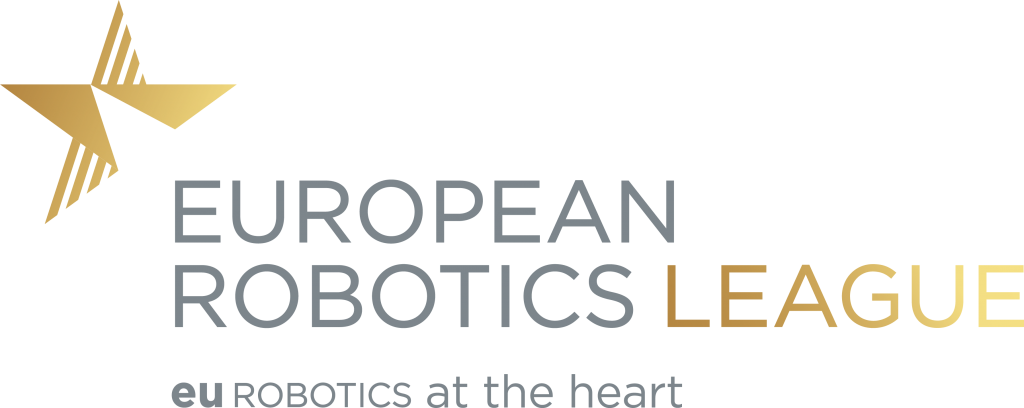
From November 25 to 28, 2024, the 1st euROBIN Coopetition will take place in Nancy, France, following Humanoids 2024, the IEEE-RAS 2024 International Conference on Humanoid Robots.
euROBIN coopetitions are designed not only to test individual team capabilities but also to foster collaborative innovation by rewarding teams for both their own achievements and the successful integration of their developed modules by others. By promoting modularity, reusability, and transferability in robotic systems, euROBIN aims to advance the frontier of robotics and artificial intelligence, driving progress in diverse application domains such as robotic manufacturing, personal robotics, and outdoor robotics for sustainable communities. Hereby, with these profiles we would like to welcome you to the pioneering world of the euROBIN project, where the brightest robotic teams from across Europe converge to participate in this groundbreaking event.

- NAME: Munich Institute for Robotics and Machine Intelligence (MIRMI) at the Technical University of Munich (TUM) or MIRMI / TUM
- TYPE: Institute
- LEADER CONTACT: Abdalla Swikir
This email address is being protected from spambots. You need JavaScript enabled to view it. Peter So -This email address is being protected from spambots. You need JavaScript enabled to view it. - PRESS CONTACT: Dayana Ramirez-
This email address is being protected from spambots. You need JavaScript enabled to view it. - URL WEBSITE: https://www.mirmi.tum.de
- TWITTER: https://x.com/TUM_MIRMI
- LINKEDIN: https://www.linkedin.com/company/mirmi-tum/
- Other useful links: Institute YouTube Channel- https://www.youtube.com/c/MIRMIRoboticsandMachineIntelligenceTUM
- VIDEOS:
- ROBOTS OR PRODUCTS SHORT PRESENTATION:
- Franka Robotics FR3, robot manipulator equipped with a Franka Hand and wrist-mounted Intel Realsense d435i camera for the Industrial League.
- Electronic Task Board, a project repository for the internet-connected task board for evaluating real-world robot manipulation skills. This project, known as the Digital Robotic Judge, or DR.J, benchmarks asynchronous manipulation performances across the electronic task board network.
- TECHNICAL DESCRIPTION OF THE ROBOT/PRODUCTS:
-
- Manipulator: Franka Robotics FR3
- Gripper: Franka Hand
- Sensor: Intel Realsens D435i mounted on the robot wrist
- Demonstrator: Internet-connected Task Board v2023

- STAND IN HUMANOIDS 2024: To be confirmed


From November 25 to 28, 2024, the 1st euROBIN Coopetition will take place in Nancy, France, following Humanoids 2024, the IEEE-RAS 2024 International Conference on Humanoid Robots.
euROBIN coopetitions are designed not only to test individual team capabilities but also to foster collaborative innovation by rewarding teams for both their own achievements and the successful integration of their developed modules by others. By promoting modularity, reusability, and transferability in robotic systems, euROBIN aims to advance the frontier of robotics and artificial intelligence, driving progress in diverse application domains such as robotic manufacturing, personal robotics, and outdoor robotics for sustainable communities. Hereby, with these profiles we would like to welcome you to the pioneering world of the euROBIN project, where the brightest robotic teams from across Europe converge to participate in this groundbreaking event.

- NAME: Munich Institute for Robotics and Machine Intelligence (MIRMI) at the Technical University of Munich (TUM) or MIRMI / TUM
- TYPE: Institute
- LEADER CONTACT: Abdalla Swikir
This email address is being protected from spambots. You need JavaScript enabled to view it. - PRESS CONTACT: Dayana Ramirez-
This email address is being protected from spambots. You need JavaScript enabled to view it. - URL WEBSITE: https://www.mirmi.tum.de
- TWITTER: https://x.com/TUM_MIRMI
- LINKEDIN: https://www.linkedin.com/company/mirmi-tum/
- Other useful links: Institute YouTube Channel- https://www.youtube.com/c/MIRMIRoboticsandMachineIntelligenceTUM
- VIDEOS:
- ROBOTS OR PRODUCTS SHORT PRESENTATION:
- Franka Robotics FR3, robot manipulator equipped with a Franka Hand and wrist-mounted Intel Realsense d435i camera for the Industrial League.
- Electronic Task Board, a project repository for the internet-connected task board for evaluating real-world robot manipulation skills. This project, known as the Digital Robotic Judge, or DR.J, benchmarks asynchronous manipulation performances across the electronic task board network.
- TECHNICAL DESCRIPTION OF THE ROBOT/PRODUCTS:
-
- Manipulator: Franka Robotics FR3
- Gripper: Franka Hand
- Sensor: Intel Realsens D435i mounted on the robot wrist
- Demonstrator: Internet-connected Task Board v2023

- STAND IN HUMANOIDS 2024: To be confirmed


From November 25 to 28, 2024, the 1st euROBIN Coopetition will take place in Nancy, France, following Humanoids 2024, the IEEE-RAS 2024 International Conference on Humanoid Robots.
euROBIN coopetitions are designed not only to test individual team capabilities but also to foster collaborative innovation by rewarding teams for both their own achievements and the successful integration of their developed modules by others. By promoting modularity, reusability, and transferability in robotic systems, euROBIN aims to advance the frontier of robotics and artificial intelligence, driving progress in diverse application domains such as robotic manufacturing, personal robotics, and outdoor robotics for sustainable communities. Hereby, with these profiles we would like to welcome you to the pioneering world of the euROBIN project, where the brightest robotic teams from across Europe converge to participate in this groundbreaking event.

- NAME: Munich Institute for Robotics and Machine Intelligence (MIRMI) at the Technical University of Munich (TUM) or MIRMI / TUM
- TYPE: Institute
- LEADER CONTACT: Abdalla Swikir
This email address is being protected from spambots. You need JavaScript enabled to view it. - PRESS CONTACT: Dayana Ramirez-
This email address is being protected from spambots. You need JavaScript enabled to view it. - URL WEBSITE: https://www.mirmi.tum.de
- TWITTER: https://x.com/TUM_MIRMI
- LINKEDIN: https://www.linkedin.com/company/mirmi-tum/
- Other useful links: Institute YouTube Channel- https://www.youtube.com/c/MIRMIRoboticsandMachineIntelligenceTUM
- VIDEOS:
- ROBOTS OR PRODUCTS SHORT PRESENTATION:
- Franka Robotics FR3, robot manipulator equipped with a Franka Hand and wrist-mounted Intel Realsense d435i camera for the Industrial League.
- Electronic Task Board, a project repository for the internet-connected task board for evaluating real-world robot manipulation skills. This project, known as the Digital Robotic Judge, or DR.J, benchmarks asynchronous manipulation performances across the electronic task board network.
- TECHNICAL DESCRIPTION OF THE ROBOT/PRODUCTS:
-
- Manipulator: Franka Robotics FR3
- Gripper: Franka Hand
- Sensor: Intel Realsens D435i mounted on the robot wrist
- Demonstrator: Internet-connected Task Board v2023

- STAND IN HUMANOIDS 2024: To be confirmed

